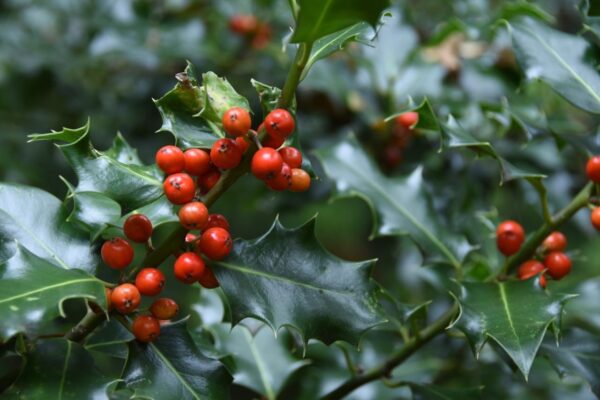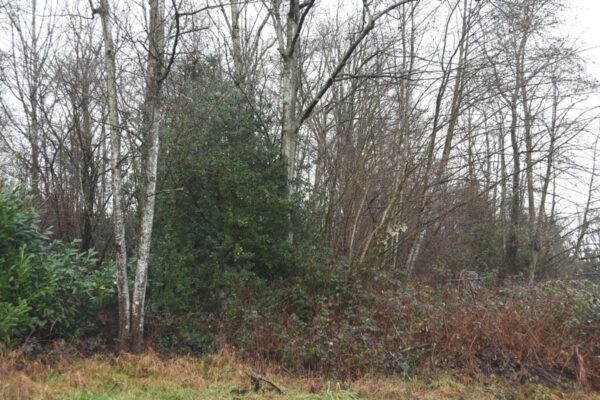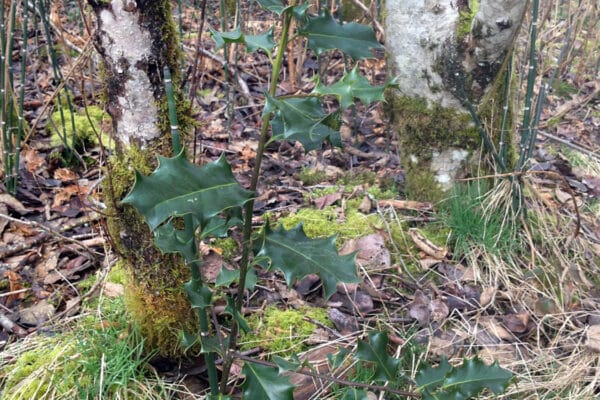English holly
Warning
English holly berries are toxic to humans and pets.
About This Species
English holly (European holly, Common holly) is known for its shiny red berries and dark green, spiny evergreen leaves. It is commonly used landscape ornamental often used for holiday decorations and floral arrangements and intentionally introduced from its native range of Europe. English holly has become a serious invasive because of its adaptability to grow in shade or sun, and how easy its seeds are spread by birds. It will crowd out native species as well as monopolize groundwater.
How to Identify
English holly can range from 7-10 m tall at maturity but is typically found at smaller heights of 1-3 m. It can also grow as creeping vines.
Flowers are small, white and sweetly scented. Female trees produce bunches of red, yellow or orange berries in winter that are poisonous to people but not to birds.
Leaves are thick, glossy, dark green and wavy, and 1-3 in long, appearing alternately. They have sharp, stout spines along the edges, although leaves may be smooth on older branches.

Take Action
To remove small seedlings, pull them out by hand. To remove larger specimens, cut the tree at ground level and monitor for re-sprouting. If any suckers appear on or around the stump, cut them at the base immediately.
-
If you need advice about invasive species on your property or you are concerned about reported invasives in your local area, contact your local government or regional invasive species organization.

Plantwise
Learn about best practices
A few non-invasive alternatives to plant instead of English holly include:
- Holly-leaf osmanthus (Osmanthus heterophyllus)
- Meserve holly (Ilex x meservae)
- Oregon grape (Berberis nervosa)
- San Jose holly (Ilex x aquipernyi 'San Jose')
- Red elderberry (Sambucus racemosa subsp. pubens)
REPORT TO PROTECT BC’S BIODIVERSITY

Use the app
Observe and report to protect BC’s biodiversity

Report through this website
Use our form to tell us what you’re seeing and where.


















